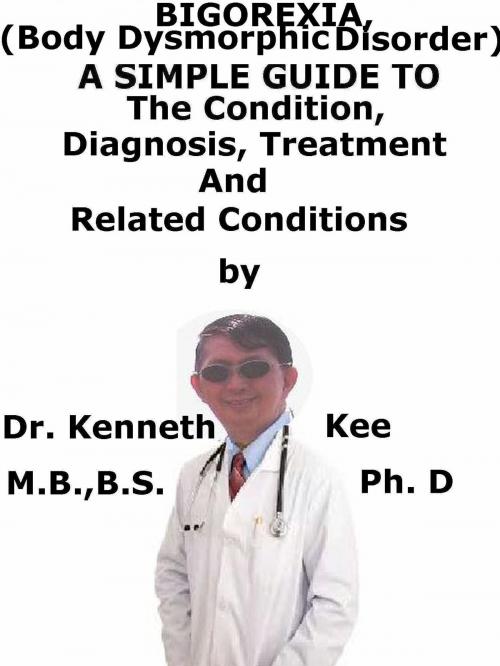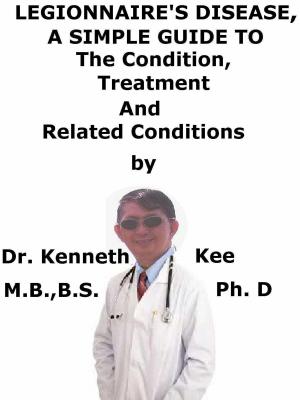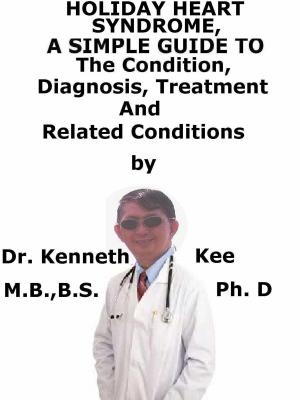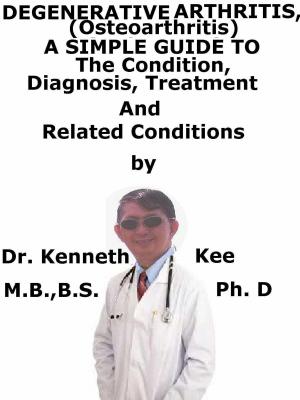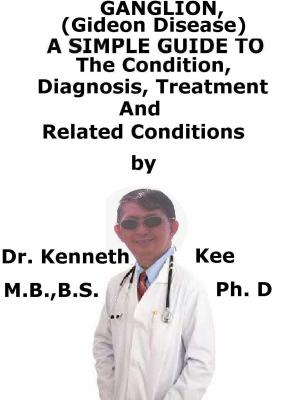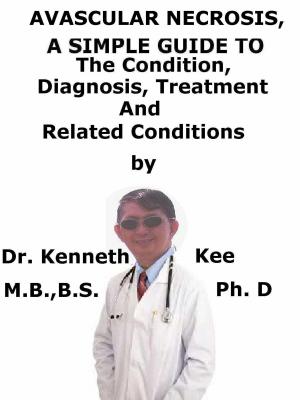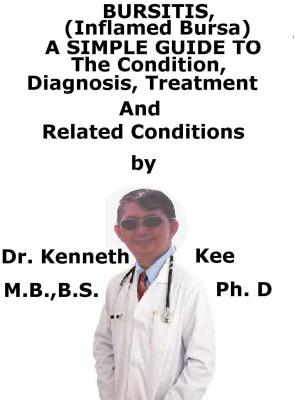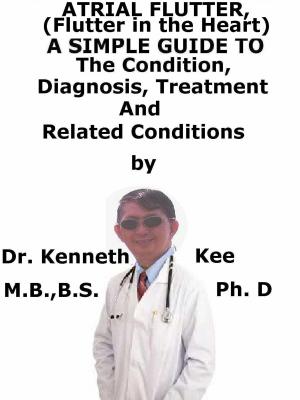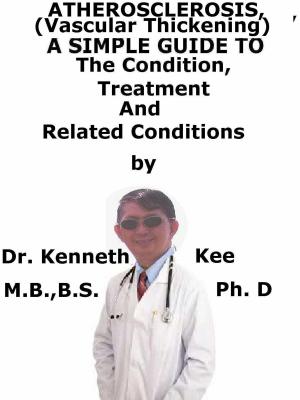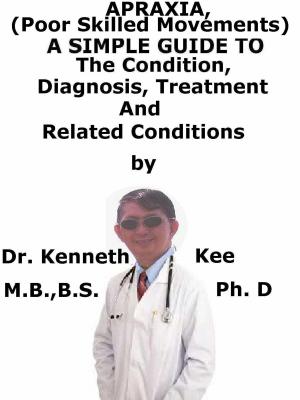Bigorexia, (Body Dysmorphic Disorder) A Simple Guide To The Condition, Diagnosis, Treatment And Related Conditions
Nonfiction, Health & Well Being, Psychology, Eating Disorders, Pathological Psychology| Author: | Kenneth Kee | ISBN: | 9781370600182 |
| Publisher: | Kenneth Kee | Publication: | August 3, 2017 |
| Imprint: | Smashwords Edition | Language: | English |
| Author: | Kenneth Kee |
| ISBN: | 9781370600182 |
| Publisher: | Kenneth Kee |
| Publication: | August 3, 2017 |
| Imprint: | Smashwords Edition |
| Language: | English |
Bigorexia or reverse anorexia is a medical disorder of mainly males who are unhappy with their perceived body image and begin to diet to improve their body size and muscles.
The term muscle dysmorphia indicates a subtype of body dysmorphic disorder (BDD) which is a form of obsessive compulsive disorder.
These men have become persistently dissatisfied with their perceived body image
Muscle dysmorphia, also called "bigorexia", "megarexia", or "reverse anorexia", is a subtype of body dysmorphic disorder, but is often also grouped with eating disorders.
Involving mostly males, and many athletes, muscle dysmorphia is obsessive preoccupation through delusional or exaggerated belief that one's own body is too small, too skinny, insufficiently muscular, or insufficiently lean, even though in most cases, the patient's build is normal or even exceptionally large and muscular already.
Severely distressful and causing personal distraction, muscle dysmorphia's bodily concerns cause absences from school, work, and socializing.
Even though compared to anorexia nervosa in females, muscle dysmorphia is mostly not well known and difficult to recognize, especially since males having it normally look healthy to others.
By some estimates, 10% of gym-going men have muscle dysmorphia
Body dysmorphic disorder (BDD) is an anxiety disorder that induces a person to have an abnormal view of how they appear and to waste a lot of time worrying about their appearance.
They may be concerned that a hardly visible scar is a major deformity that everyone is staring at, or that their nose looks abnormal.
Almost everyone feels not happy about the way they appear at some point in their life, but these thoughts normally come and go, and may not be remembered.
For someone with BDD, the worries cause a lot of distress, do not go away and have an important impact on daily life.
The person thinks they are ugly or deformed and that other people observe them in this way, in spite of reassurances from others about their appearance.
The exact cause of BDD is not known.
It may be genetic or produced by a chemical imbalance in the brain.
Past life problems may play a part too – BDD may be more frequent in people who were made fun of, bullied or abused when they were children.
The most frequent areas of concern for people with BDD are:
1. Skin imperfections — these are wrinkles, scars, acne, and blemishes.
2. Hair — this might be head or body hair or absence of hair.
3. Facial features — frequently this affects the nose, but it also might affect the shape and size of any feature.
4. Other areas of worries are the size of the penis, muscles, breasts, thighs, buttocks, and the presence of certain body smells.
One red flag to diagnosis is when patients constantly look for plastic surgery for the same or multiple apparent physical defects.
With treatment, many people with BDD will have an improvement in their symptoms.
If the patient has comparatively mild BDD, the patient will normally be sent for a talking treatment called cognitive behavioral therapy (CBT).
More serious cases may be treated with a type of medicine called a selective serotonin reuptake inhibitor (SSRI) and more intensive CBT.
Cognitive behavioral therapy (CBT) is the form of treatment that can help the patient treat the disorder by altering the way the patient think and behave
Selective serotonin reuptake inhibitors (SSRIs) are a form of antidepressant that raises the levels of a chemical called serotonin in the brain.
If SSRIs are not successful in treating the symptoms, the patient may be given a different tricyclic antidepressant called clomipramine.
Treatment tends to be a combination:
1. Psychotherapy
2. Medicine
3. Group and family therapy
TABLE OF CONTENT
Introduction
Chapter 1 Bigorexia (Body Dysmorphic Disorder)
Chapter 2 Causes
Chapter 3 Symptoms
Chapter 4 Diagnosis
Chapter 5 Treatment
Chapter 6 Prognosis
Chapter 7 Anorexia Nervosa
Chapter 8 Obsessive Compulsive Disorders
Bigorexia or reverse anorexia is a medical disorder of mainly males who are unhappy with their perceived body image and begin to diet to improve their body size and muscles.
The term muscle dysmorphia indicates a subtype of body dysmorphic disorder (BDD) which is a form of obsessive compulsive disorder.
These men have become persistently dissatisfied with their perceived body image
Muscle dysmorphia, also called "bigorexia", "megarexia", or "reverse anorexia", is a subtype of body dysmorphic disorder, but is often also grouped with eating disorders.
Involving mostly males, and many athletes, muscle dysmorphia is obsessive preoccupation through delusional or exaggerated belief that one's own body is too small, too skinny, insufficiently muscular, or insufficiently lean, even though in most cases, the patient's build is normal or even exceptionally large and muscular already.
Severely distressful and causing personal distraction, muscle dysmorphia's bodily concerns cause absences from school, work, and socializing.
Even though compared to anorexia nervosa in females, muscle dysmorphia is mostly not well known and difficult to recognize, especially since males having it normally look healthy to others.
By some estimates, 10% of gym-going men have muscle dysmorphia
Body dysmorphic disorder (BDD) is an anxiety disorder that induces a person to have an abnormal view of how they appear and to waste a lot of time worrying about their appearance.
They may be concerned that a hardly visible scar is a major deformity that everyone is staring at, or that their nose looks abnormal.
Almost everyone feels not happy about the way they appear at some point in their life, but these thoughts normally come and go, and may not be remembered.
For someone with BDD, the worries cause a lot of distress, do not go away and have an important impact on daily life.
The person thinks they are ugly or deformed and that other people observe them in this way, in spite of reassurances from others about their appearance.
The exact cause of BDD is not known.
It may be genetic or produced by a chemical imbalance in the brain.
Past life problems may play a part too – BDD may be more frequent in people who were made fun of, bullied or abused when they were children.
The most frequent areas of concern for people with BDD are:
1. Skin imperfections — these are wrinkles, scars, acne, and blemishes.
2. Hair — this might be head or body hair or absence of hair.
3. Facial features — frequently this affects the nose, but it also might affect the shape and size of any feature.
4. Other areas of worries are the size of the penis, muscles, breasts, thighs, buttocks, and the presence of certain body smells.
One red flag to diagnosis is when patients constantly look for plastic surgery for the same or multiple apparent physical defects.
With treatment, many people with BDD will have an improvement in their symptoms.
If the patient has comparatively mild BDD, the patient will normally be sent for a talking treatment called cognitive behavioral therapy (CBT).
More serious cases may be treated with a type of medicine called a selective serotonin reuptake inhibitor (SSRI) and more intensive CBT.
Cognitive behavioral therapy (CBT) is the form of treatment that can help the patient treat the disorder by altering the way the patient think and behave
Selective serotonin reuptake inhibitors (SSRIs) are a form of antidepressant that raises the levels of a chemical called serotonin in the brain.
If SSRIs are not successful in treating the symptoms, the patient may be given a different tricyclic antidepressant called clomipramine.
Treatment tends to be a combination:
1. Psychotherapy
2. Medicine
3. Group and family therapy
TABLE OF CONTENT
Introduction
Chapter 1 Bigorexia (Body Dysmorphic Disorder)
Chapter 2 Causes
Chapter 3 Symptoms
Chapter 4 Diagnosis
Chapter 5 Treatment
Chapter 6 Prognosis
Chapter 7 Anorexia Nervosa
Chapter 8 Obsessive Compulsive Disorders
